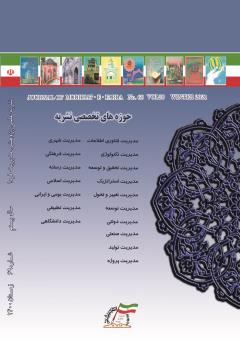Cuncurent engineering for mass production of products from Research and Development projects
Subject Areas :
1 - Malik Ashtar University of Technology, Industrial Engineering Complex, Tehran
Keywords: project-oriented organization, concurrent engineering, research and development project,
Abstract :
One of the issues and problems facing the research cycle is the integration of design and production. Research institutes design products that are made without the cooperation of the construction engineering firm. The manufacturing institution does not have a common language in the production of the designed product and therefore no production takes place. Design without considering production and supply considerations seems beautiful only for the designer, but in some cases, the production organization is either not able to produce it or has problems in supplying some parts. This research deals with the issue of coordination of design, production and supply, which by examining the literature, its key indicators at the level of research projects and industrial development were extracted and finally ranked with decision models. For the first time, this research examines concurrent engineering in the defense industry and provides a model for the integration of design, production and supply. The indicators of this issue are divided into 4 criteria of product structure and architecture, management, quality and organizational cooperation. The criteria of product structure and architecture are the most important.


